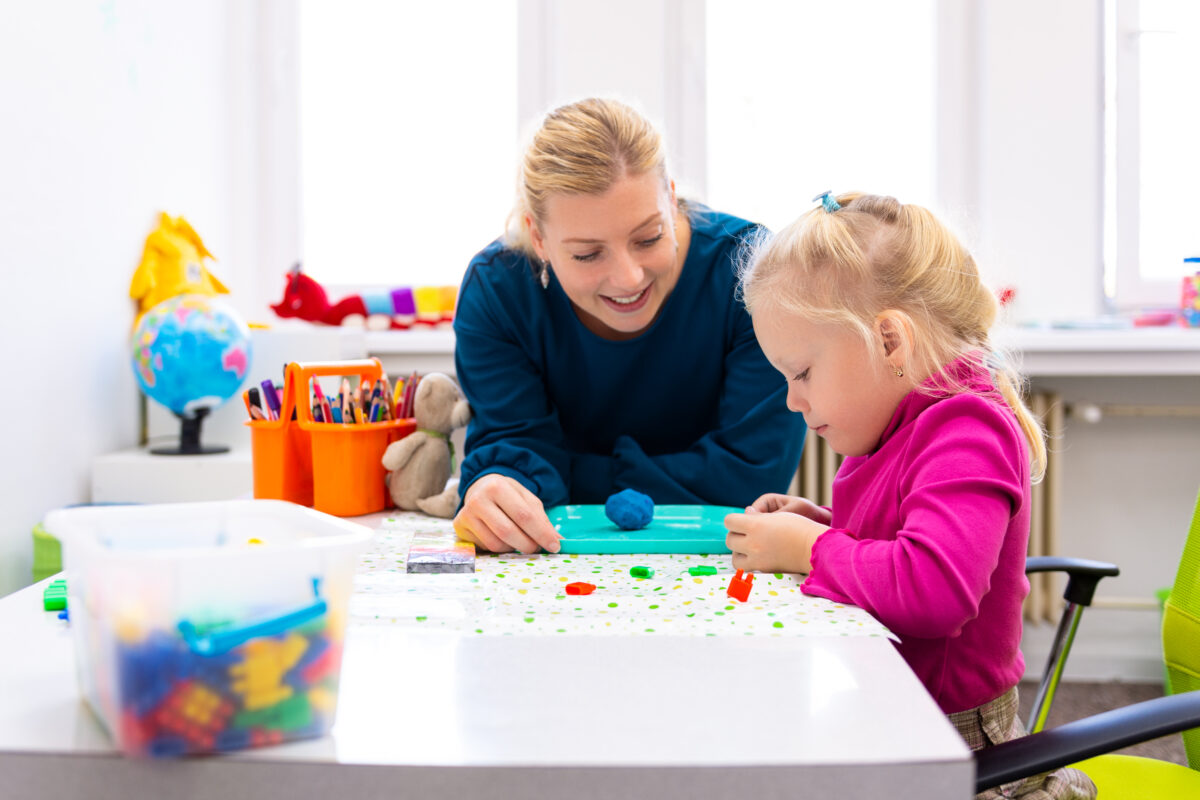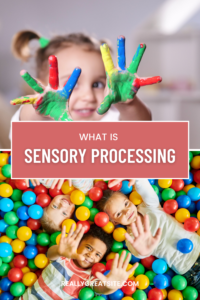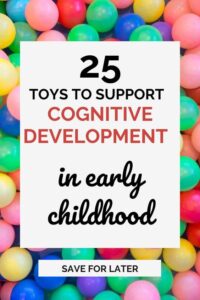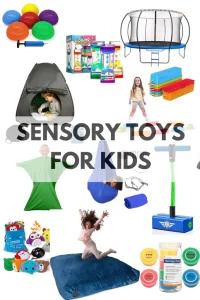
Breaking Barriers: How Occupational Therapy Can Assist Children with Developmental Delays
Occupational therapy (OT) is a holistic and client-centered healthcare profession that focuses on enabling individuals to participate in meaningful and purposeful activities of daily life.
Occupational therapists work with people across the lifespan, from infants to geriatrics. We believe that the activities we participate in are what give our lives meaning
In this comprehensive blog post, we will delve into the world of occupational therapy, exploring its core principles, methodologies, and the profound impact it can have on children experiencing developmental challenges.
This post was created by Marra Robert, OTD, OTRL.

Hi! My name is Marra, and I’m a mama and a pediatric occupational therapist who has years of experience working with children with a variety of developmental needs and helping their parents navigate the ups and downs of child development.
I loved being a support person for parents learning about occupational therapy, autism, sensory processing, developmental delays, and their child’s individual needs.
Occupational therapy is a holistic, client-centered profession that improves function in meaningful activities and quality of life. Occupations are more than your job, but all of the activities that occupy your time from the time you wake up until the time you go to sleep.
For children, play is the most important occupation and most commonly addressed in occupational therapy. Through innovative and transformative methods, occupational therapy has proven to be a powerful tool in breaking down barriers and assisting children with developmental delays.
In this article, we will explore the groundbreaking ways in which occupational therapy addresses self-care, enhances school performance, and promotes social participation to unlock the incredible potential within each child.
This post is all about occupational therapy. Join us on this enlightening journey as we delve into the invaluable impact occupational therapy has on the overall development of children and discover how it can provide the key to a brighter future.,

UNDERSTANDING occupational therapy
Occupational therapy is a holistic field that addresses the physical, psychological, and social aspects of individuals across the lifespan. The primary goal of occupational therapy is to enhance a person’s ability to engage in daily activities independently and improve their overall quality of life.
When it comes to children with developmental delays, occupational therapy plays a crucial role in fostering their growth and development. It can enhance a child’s ability to participate in daily activities that are important to them and their family.
CORE PRINCIPLES OF OCCUPATIONAL THERAPY
1. HOLISTIC APPROACH
Occupational therapy takes a holistic approach to address the interconnected aspects of an individual’s life. For children with developmental delays, this means considering not only the specific delays or challenges they face but also their environment, family dynamics, strengths, and social interactions.
2. Client-Centered CarE
Occupational therapy is inherently client-centered, meaning that interventions are tailored to meet the unique needs and goals of each child and their family. This approach recognizes the individuality of every child and acknowledges that their developmental journey is distinct.
Occupational therapy focuses on improving meaningful activities for the child and their family. What activities are meaningful to that child are going to be unique.
3. therapeutic use of activities
Activities are the cornerstone of occupational therapy. These can range from play and self-care tasks to school-related activities. By engaging children in purposeful activities, occupational therapists aim to promote skill development, enhance sensory integration, and improve overall functioning.
Occupational therapy is most effective when the child is participating in the activity that is being targeted during the intervention instead of only participating in exercises to address needs.

4. Collaboration and communication
Occupational therapists work closely with parents, teachers, and other healthcare professionals to ensure a collaborative and integrated approach to a child’s development. Open communication and teamwork are key elements in achieving positive outcomes
Occupational THERAPY and Developmental Delays in Children
Developmental delays in children can manifest in various areas, including motor skills, speech and language, cognitive abilities, and social-emotional development. These delays can be attributed to a range of factors, including genetic conditions, neurological issues, premature birth, or environmental influences. Occupational therapy can address all of these areas.

Occupational Therapy for Children with Developmental Delays
1. Fine and Gross Motor Skills
Fine motor skills are the skills required to complete small movement activities with out hands such as coloring and writing, manipulating fasteners, playing with toys and cooking. We use our hands to participate in so many important activities throughout our day. Fine motor skills is often times an important goal in occupational therapy.
Gross motor skills are the skills needed to complete larger movements with our bodies, such as staying balanced, walking, running., jumping, and carrying heavy objects. It is so important for children to participate in gross motor or big movement play every day.
Occupational therapy addresses delays in fine and gross motor skills through targeted activities that enhance coordination, strength, and control. For example, activities such as finger painting, playing with building blocks, or engaging in outdoor play can contribute to the development of both fine and gross motor skills.
2. Sensory Integration
Many children with developmental delays experience challenges with sensory processing. Occupational therapy uses sensory integration techniques to help children regulate their responses to sensory input. This might involve activities that provide sensory input, such as swinging, brushing, or playing with textured materials.
So what is sensory processing? Sensory processing is our ability to take in sensory input from the environment, process it, make sense of all of it, and then choose an appropriate response.
We have 8 sensory systems that we receive sensory input from: our vision, hearing, touch, smell, taste, vestibular, proprioceptive, and interoceptive sensory systems. If you’d like to learn more about sensory processing and our 8 senses check out the post linked below.

3. Cognitive Developmental Skills
Occupational therapy interventions aim to enhance cognitive skills such as problem-solving, attention, and memory. Therapists may use games, puzzles, and other cognitive activities to stimulate cognitive development in a fun and engaging manner.
Occupational therapy also aims at integrating multiple skills together to increase functional participation in daily activities. Activities such as play involve multiple skill sets, such as gross motor skills., fine motor skills, and cognitive skills, to all be used at once.

4. Self-Care Skills
Independence in self-care tasks is a crucial aspect of a child’s development. Occupational therapy works with children to improve skills like dressing, feeding, and grooming, ensuring they can participate in these activities independently’ and boosting their self-esteem and confidence.
5. Social Emotional Development
Developmental delays can impact a child’s social-emotional well-being. Occupational therapy uses play-based interventions to promote social skills, emotional regulation, and the ability to interact with peers effectively. Group activities and games facilitate the development of social bonds and teamwork.
How Parents Can Support Occupational Therapy Goals
1. Consistency is Key: Encourage consistency in practicing activities recommended by the occupational therapy at home. Consistent engagement promotes skill reinforcement and accelerates progress.
Consistency with participating in therapy is also really important to a child’s progress. It is best practice to have the child’s parents and caregivers engaged in the occupational therapy so that they can help with carry-over at home to implement strategies and help the child continue to progress with their goals.
2. Open Communication: Maintain open communication with the occupational therapist. Share observations, concerns, and successes at home to ensure a comprehensive understanding of the child’s progress.
Occupational therapy is client-centered so every intervention and treatment strategy is going to be uniquely designed to fit the individual child and their family’s needs. So it’s important to share your concerns and questions with the occupational therapist.
3. Incorporate Occupational Therapy Strategies into Daily Life: Embed occupational therapy strategies into daily routines and activities. For instance, use mealtime as an opportunity for self-feeding practice or integrate sensory-friendly activities into playtime.
4. Promote Independence: Foster independence by allowing the child to take the lead in self-care tasks. Celebrate small victories and provide positive reinforcement to boost their confidence.
5. Create a Supportive Environment: Ensure the home environment is conducive to the child’s needs. Minimize distractions, create designated spaces for focused activities, and provide the necessary tools and resources recommended by the occupational therapist.

Occupational therapy is a powerful tool for empowering children with developmental delays to reach their full potential. By focusing on individualized, goal-oriented interventions, occupational therapists address a wide range of challenges, fostering growth in fine and gross motor skills, sensory processing, cognitive abilities, self-care skills, and social-emotional development.
Through collaborative efforts involving therapists, parents, educators, and healthcare professionals, children with developmental delays can embark on a journey of discovery and achievement, building a foundation for a fulfilling and independent future.
